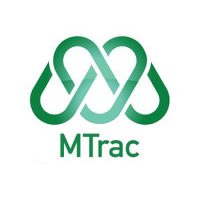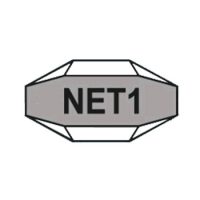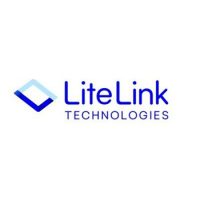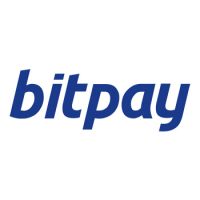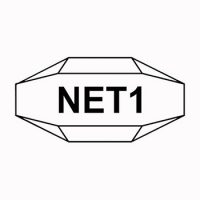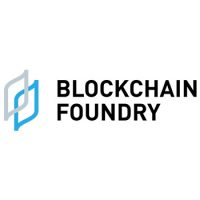Blockchain Press Releases
Industrial Robotics Market worth $32.5 billion by 2028 – Exclusive Report by MarketsandMarkets™
CHICAGO, July 27, 2023 /PRNewswire/ — The Industrial Robotics market is projected to grow from USD 17.0 billion in 2023 and is projected to reach USD 32.5 billion by 2028; it is expected to grow at a CAGR of 13.8% from 2023 to 2028 according to a new report by MarketsandMarkets™. Growing demand for automation in manufacturing and logistics is one of the major drivers of the market.
Download PDF Brochure: https://www.marketsandmarkets.com/pdfdownloadNew.asp?id=643
Browse in-depth TOC on “Industrial Robotics Market”
384 – Tables
93 – Figures
482 – Pages
Industrial Robotics Market Report Scope:
|
Report Coverage |
Details |
|
Market Revenue in 2023 |
$17.0 billion |
|
Estimated Value by 2028 |
$32.5 billion |
|
Growth Rate |
Poised to grow at a CAGR of 13.8% |
|
Market Size Available for |
2019–2028 |
|
Forecast Period |
2023–2028 |
|
Forecast Units |
Value (USD Million/Billion) |
|
Report Coverage |
Revenue Forecast, Competitive Landscape, Growth Factors, and Trends |
|
Segments Covered |
By Type, Component, Payload, Application, End Use Industry and Region |
|
Geographies Covered |
North America, Europe, Asia Pacific, and Rest of World |
|
Key Market Challenge |
Worforce skills and interoperability |
|
Key Market Opportunities |
Increasing automation in electronics industry |
|
Key Market Drivers |
Growing adoption of Industry 4.0 |
Collaborative robots’ segment is expected to grow at highest CAGR during the forecast period.
Continuous advancements in artificial intelligence, machine learning, and sensor tesschnologies are driving the ongoing development of collaborative robots. These advancements enable cobots to become more intelligent, adaptable, and skilled in handling complex tasks. As industries increasingly seek flexible automation solutions, cobots are set to revolutionize work environments, shaping the future of work and enhancing overall productivity and efficiency.
Upto 16.00 Kg segment in payload capacity is expected to have largest market share by 2028.
Robots with a payload-carrying capacity of up to 16.00 kg are mainly adopted in the automotive industry for arc welding and spot-welding applications, especially for 2-wheelers. In the electrical & electronics industry, these robots can be adopted for soldering and packaging electronic components. The increasing miniaturization of electronic components and chipsets has resulted in the large-scale adoption of robots with a payload-carrying capacity of up to 16.00 kg in the electrical & electronics industry. Such robots have also been widely adopted in the food & beverages industry in recent years for applications such as pick and place, sorting, and palletizing.
Processing segment is expected to grow at highest rate of CAGR during the forecast period.
Processing applications considered in this section are grinding, milling, and cutting. Grinding robots are used to quickly and efficiently process parts of objects, such as vehicle bodies and wooden planks. These robots save time and costs while machining complex designs while improving the uniformity of each workpiece. A force/torque sensor is used in conjunction with the end effector to apply the right amount of pressure needed. Automated grinding also reduces health risks associated with the metal dust affecting workers in a manual process. In automotive applications, robotic grinders are used for machining axle beams and connecting rods.
Automotive segment is expected to hold for largest share during the forecast period.
Automotive manufacturers strive for consistency and repeatability since any untoward issue can stop the workflow in a vehicle assembly line. There are two main stages in vehicle production: manufacturing and assembly. In manufacturing, spot welding and painting robots are used extensively. Assembly includes a mix of light and heavy tasks, such as screw driving, windshield installation, wheel mounting, and labeling. Articulated robots are generally used for most tasks; however, parallel robots assemble smaller components, such as pumps and motors.
Inquiry Before Buying: https://www.marketsandmarkets.com/Enquiry_Before_BuyingNew.asp?id=643
Asia Pacific region to have largest share of Industrial Robotics market during the forecast period.
Asia Pacific is considered one of the world’s major manufacturing hubs and is expected to provide ample growth opportunities to the industrial robotics industry. Low production costs, easy availability of labor, lenient emission and safety norms, and government initiatives for foreign direct investments (FDIs) are some of the major factors accelerating the market growth in APAC. The aging population in China and Japan has resulted in rising labor costs, leading to the growing adoption of automation. The increasing population is also attracting companies to invest in APAC.
Key players in the industrial robotics companies include ABB (Switzerland), FANUC CORPORATION (Japan), Yaskawa Electric Corporation (Japan), KUKA AG (Germany), and Mitsubishi Electric (Japan). Other companies that have a significant presence in the industrial robotics market are Kawasaki Heavy Industries (Japan), DENSO Corporation (Japan), Nachi-Fujikoshi (Japan), Durr (Germany), and SEIKO EPSON (Japan).
Get 10% Free Customization on this Report: https://www.marketsandmarkets.com/requestCustomizationNew.asp?id=643
Browse Adjacent Market: Semiconductor and Electronics Market Research Reports &Consulting
Related Reports:
Smart Factory Market by Component (Industrial Sensors, Industrial Robots, Industrial 3D Printers, Machine Vision Systems), Solution (SCADA, MES, Industrial Safety, PAM), Industry (Process Industry, Discrete Industry) and Region – Global Forecast to 2027
Collaborative Robot Market by Payload (Up to 5 Kg, 5-10 kg, 10-20 kg, more than 20 kg), Component, Robotic Arm, End Effectors, Drives, Controllers, Sensors, Power Supply, Motors, Software), Application, Industry and Region – Global Forecast to 2029
Service Robotics Market by Environment (Aerial, Ground, Marine), Type (Professional, Personal & Domestic), Component, Application (Logistics, Inspection & Maintenance, Public Relations, Education) and Region – Global Forecast to 2028
Robot End Effector Market by Type (Grippers, Welding Guns, Tool Changer, Clamps, Suction Cups, Deburring, Soldering, Milling, & Painting Tools), Robot Type (Traditional, Collaborative), Application, Industry & Region – Forecast to 2028
Smart Manufacturing Market by Information Technology, Enabling Technology, Industry (Process and Discrete) and Geography (North America, Europe, Asia Pacific, Rest of World) (2021-2027)
About MarketsandMarkets™
MarketsandMarkets™ is a blue ocean alternative in growth consulting and program management, leveraging a man-machine offering to drive supernormal growth for progressive organizations in the B2B space. We have the widest lens on emerging technologies, making us proficient in co-creating supernormal growth for clients.
The B2B economy is witnessing the emergence of $25 trillion of new revenue streams that are substituting existing revenue streams in this decade alone. We work with clients on growth programs, helping them monetize this $25 trillion opportunity through our service lines – TAM Expansion, Go-to-Market (GTM) Strategy to Execution, Market Share Gain, Account Enablement, and Thought Leadership Marketing.
Built on the ‘GIVE Growth’ principle, we work with several Forbes Global 2000 B2B companies – helping them stay relevant in a disruptive ecosystem. Our insights and strategies are molded by our industry experts, cutting-edge AI-powered Market Intelligence Cloud, and years of research. The KnowledgeStore™ (our Market Intelligence Cloud) integrates our research, facilitates an analysis of interconnections through a set of applications, helping clients look at the entire ecosystem and understand the revenue shifts happening in their industry.
To find out more, visit www.MarketsandMarkets™.com or follow us on Twitter, LinkedIn and Facebook.
Contact:
Mr. Aashish Mehra
MarketsandMarkets™ INC.
630 Dundee Road
Suite 430
Northbrook, IL 60062
USA: +1-888-600-6441
Email: [email protected]
Visit Our Web Site: https://www.marketsandmarkets.com/
Research Insight: https://www.marketsandmarkets.com/ResearchInsight/industrial-robotics-market.asp
Content Source: https://www.marketsandmarkets.com/PressReleases/industrial-robotics.asp
Logo: https://mma.prnewswire.com/media/660509/MarketsandMarkets_Logo.jpg
View original content:https://www.prnewswire.co.uk/news-releases/industrial-robotics-market-worth-32-5-billion-by-2028—exclusive-report-by-marketsandmarkets-301887085.html

Blockchain
Ethereum ETFs Aren’t Blockchain But Is A Revolutionary Tech: Top 6 Amazing Reasons To Invest In Them
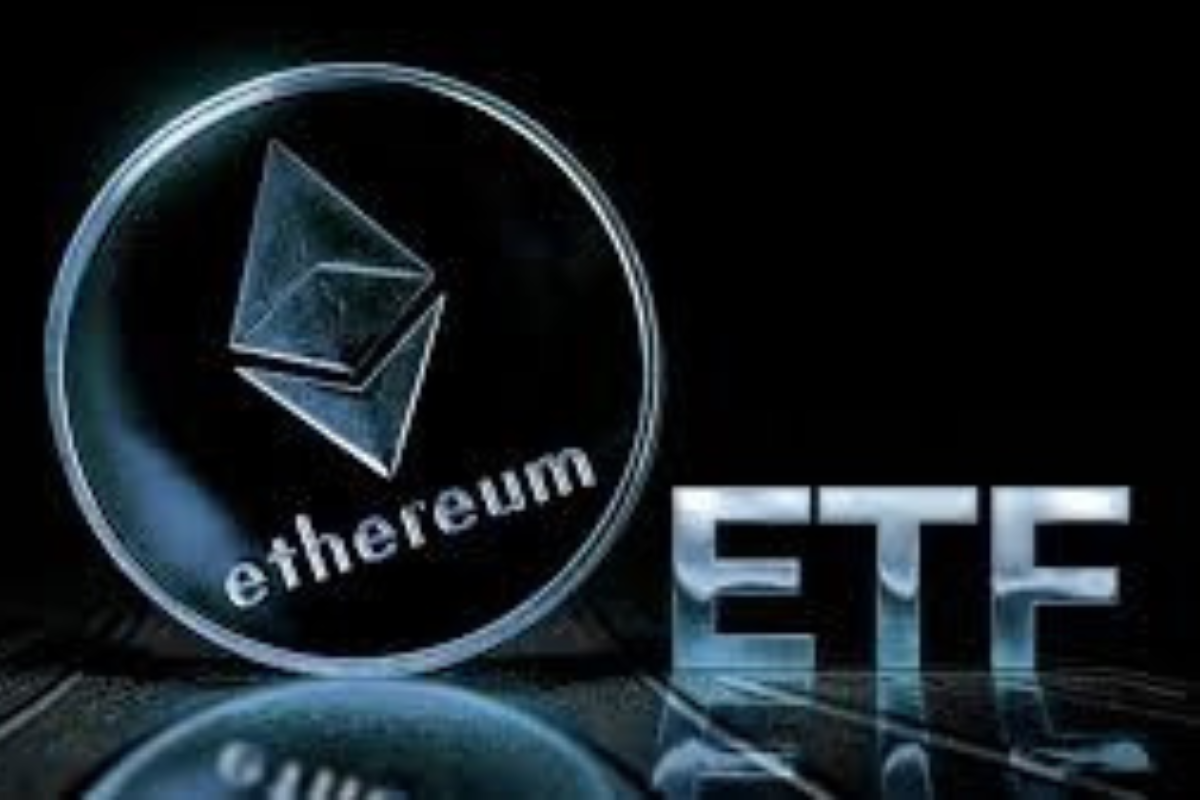
The financial landscape is rapidly evolving, with the integration of blockchain technology and cryptocurrencies becoming more prominent. Among these, Ethereum ETFs (Exchange-Traded Funds) have emerged as a significant investment vehicle, offering exposure to the Ethereum blockchain’s native cryptocurrency, Ether (ETH), without requiring direct ownership. However, it’s crucial to understand that Ethereum ETFs are distinct from the blockchain itself and serve different purposes in the investment world.
Understanding Ethereum and ETFs
Ethereum: A decentralized platform that enables the creation and execution of smart contracts and decentralized applications (dApps). It operates using its cryptocurrency, Ether (ETH), which fuels the network.
ETF (Exchange-Traded Fund): A type of investment fund that holds a collection of assets and is traded on stock exchanges. ETFs can include various asset classes, such as stocks, commodities, or bonds.
Ethereum ETFs: The Intersection of Traditional Finance and Cryptocurrency
An Ethereum ETF provides a way for investors to gain exposure to the price movements of Ether without directly purchasing the cryptocurrency. This is achieved through an ETF structure, where the fund holds assets linked to the value of Ether, and investors can buy shares of the ETF on traditional stock exchanges.
Key Features of Ethereum ETFs:
- Indirect Exposure: Investors gain exposure to Ether’s price changes without needing to manage or store the cryptocurrency themselves.
- Regulatory Compliance: Unlike the relatively unregulated cryptocurrency market, ETFs operate under the oversight of financial regulators, offering a layer of investor protection.
- Accessibility: Ethereum ETFs are available through traditional brokerage platforms, making them accessible to a broader range of investors.
Why Invest in an Ethereum ETF?
- Diversification: Including an Ethereum ETF in a portfolio can provide exposure to the cryptocurrency market, potentially enhancing diversification beyond traditional assets.
- Convenience and Familiarity: ETFs are a familiar investment product, simplifying the process of investing in cryptocurrencies.
- Professional Management: ETF managers handle the investment decisions, including the buying and selling of assets, which can be advantageous for those less familiar with the cryptocurrency space.
- Regulatory Oversight: ETFs are subject to regulatory scrutiny, potentially offering more safety and transparency compared to direct cryptocurrency investments.
- Potential for Growth: As the cryptocurrency market grows, ETFs linked to assets like Ether may benefit from rising prices.
Key Differences Between Ethereum and Ethereum ETFs
While both are related to the Ethereum blockchain, Ethereum itself and Ethereum ETFs represent different forms of investment:
- Ethereum (ETH):
- Direct ownership of the cryptocurrency.
- Full exposure to Ethereum’s features, including staking and network participation.
- Traded on cryptocurrency exchanges.
- Highly volatile and largely unregulated.
- Ethereum ETF:
- Indirect exposure through shares representing Ether’s value.
- Traded on traditional stock exchanges under regulatory oversight.
- Offers a more stable and familiar investment structure.
- Typically lower volatility compared to direct cryptocurrency ownership.
Future Considerations for Ethereum ETFs
The approval and launch of Ethereum ETFs mark a significant milestone in bringing cryptocurrencies closer to mainstream finance. They offer a convenient and regulated means for investors to gain exposure to the growing digital assets market. However, they also come with limitations, such as not allowing direct participation in the Ethereum ecosystem’s innovations, like dApps and smart contracts.
As the market evolves, we may see more sophisticated financial products that better capture the full potential of the Ethereum ecosystem. For now, Ethereum ETFs provide a balanced option for those interested in cryptocurrency exposure within the framework of traditional finance.
In conclusion, while Ethereum ETFs offer a gateway into the world of digital assets, they should be viewed as complementary to, rather than a replacement for, direct investment in the underlying blockchain technologies. Investors should carefully consider their investment goals, risk tolerance, and the unique attributes of both Ethereum and Ethereum ETFs when making investment decisions.
Source: blockchainmagazine.net
The post Ethereum ETFs Aren’t Blockchain But Is A Revolutionary Tech: Top 6 Amazing Reasons To Invest In Them appeared first on HIPTHER Alerts.
Blockchain
Nexo Reaffirms Commitment to Data Protection with SOC 3 and SOC 2 Compliance
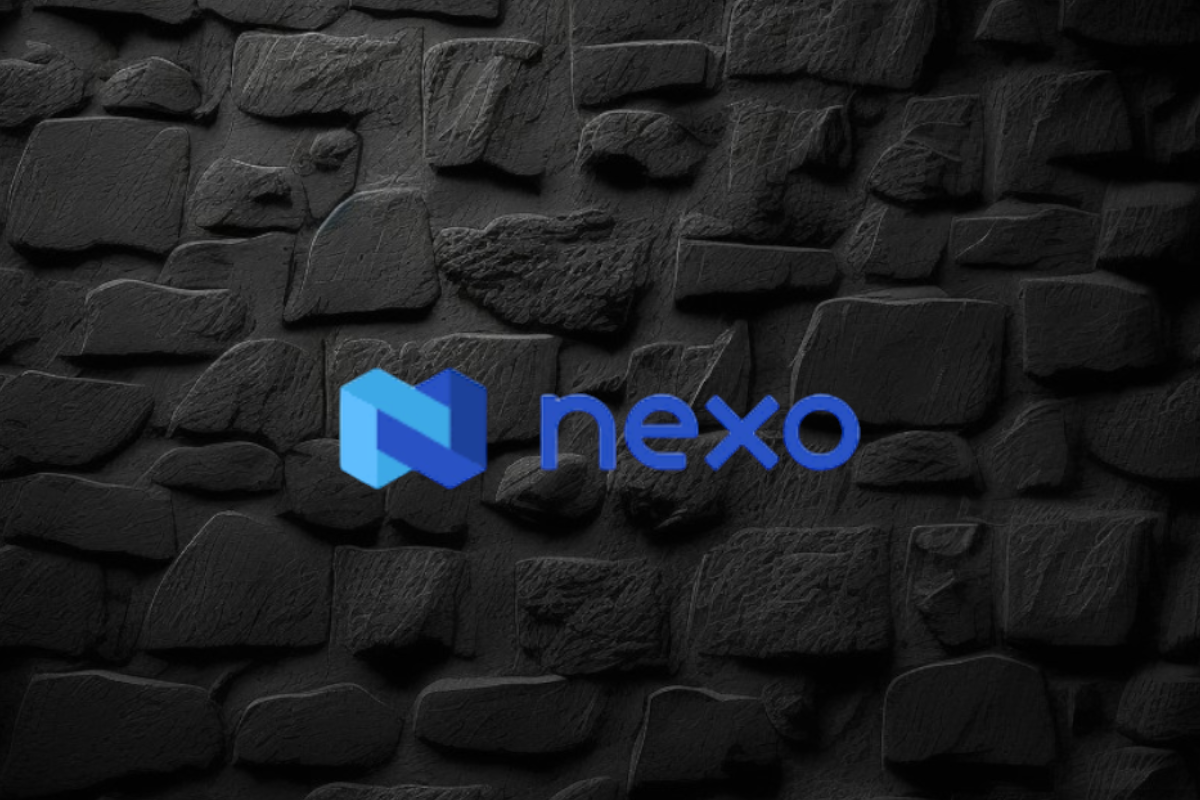
Nexo, a leading institution in the digital assets industry, has reinforced its commitment to data security by renewing its SOC 2 Type 2 audit and attaining a new SOC 3 Type 2 assessment without any exceptions. This rigorous audit process, conducted by A-LIGN, a respected independent auditor specializing in security compliance, confirms Nexo’s adherence to stringent Trust Service Criteria for Security and Confidentiality.
Key Achievements and Certifications
- SOC 2 and SOC 3 Compliance:
- SOC 2 Type 2: This audit evaluates and reports on the effectiveness of an organization’s controls over data security, particularly focusing on the confidentiality, integrity, and availability of systems and data.
- SOC 3 Type 2: This public-facing report provides a summary of SOC 2 findings, offering assurance to customers and stakeholders about the robustness of Nexo’s data security practices.
- Additional Trust Service Criteria:
- Nexo expanded the scope of these audits to include Confidentiality, showcasing a deep commitment to protecting user data.
- Security Certifications:
- The company also adheres to the CCSS Level 3 Cryptocurrency Security Standard, and holds ISO 27001, ISO 27017, and ISO 27018 certifications, awarded by RINA. These certifications are benchmarks for security management and data privacy.
- CSA STAR Level 1 Certification:
- This certification demonstrates Nexo’s adherence to best practices in cloud security, further solidifying its position as a trusted partner in the digital assets sector.
Impact on Customers and Industry Standards
Nexo’s rigorous approach to data protection and compliance sets a high standard in the digital assets industry. By achieving these certifications, Nexo provides its over 7 million users across more than 200 jurisdictions with confidence in the security of their data. These achievements not only emphasize the company’s dedication to maintaining top-tier security standards but also highlight its proactive stance in fostering trust and transparency in digital asset management.
Nexo’s Broader Mission
As a premier institution for digital assets, Nexo offers a comprehensive suite of services, including advanced trading solutions, liquidity aggregation, and tax-efficient credit lines backed by digital assets. Since its inception, the company has processed over $130 billion, showcasing its significant impact and reliability in the global market.
In summary, Nexo’s successful completion of SOC 2 and SOC 3 audits, along with its comprehensive suite of certifications, underscores its commitment to the highest standards of data security and operational integrity. This dedication positions Nexo as a leader in the digital assets space, offering unparalleled security and peace of mind to its users.
Source: blockchainreporter.net
The post Nexo Reaffirms Commitment to Data Protection with SOC 3 and SOC 2 Compliance appeared first on HIPTHER Alerts.
Blockchain
Marshall Becomes First US Senator to Walk from Controversial Crypto Bill He Co-Sponsored

Republican Senator Roger Marshall has withdrawn his support for the Digital Asset Anti-Money Laundering Act of 2023, a controversial bill he initially co-sponsored with Senator Elizabeth Warren and others. This bill, reintroduced in the Senate on July 27, 2023, aimed to bring the cryptocurrency industry into alignment with existing anti-money laundering (AML) and counter-terrorism financing (CTF) laws.
Key Provisions of the Bill
The legislation proposed stringent regulations on digital asset providers, including unhosted wallet providers, miners, and validators, by classifying them as financial institutions under the Bank Secrecy Act (BSA). It mandated these entities to adhere to BSA compliance requirements, which include extensive reporting and monitoring responsibilities. Additionally, the bill called for the Financial Crimes Enforcement Network (FinCEN) to establish regulations for reporting significant foreign digital asset holdings and to create compliance measures to address risks associated with anonymity-enhancing technologies.
Senator Marshall’s Shift
Marshall’s withdrawal from the bill comes as a surprise, particularly given his earlier criticisms of cryptocurrencies, which he has described as a “threat to national security.” This includes concerns over stablecoins like Tether potentially facilitating illegal activities and circumventing U.S. sanctions. Despite his earlier stance, Marshall’s departure from the legislation suggests a reconsideration of the bill’s implications or an alignment with broader political and industry perspectives on cryptocurrency regulation. His office has not provided a comment on the reasons for his withdrawal.
Political and Industry Reactions
The bill had garnered significant bipartisan support, with 18 co-sponsors, reflecting a broader concern in Congress over regulating the rapidly growing cryptocurrency market. However, it has also faced criticism for potentially imposing impractical compliance burdens that could stifle innovation and push crypto activities offshore. Critics argue that the bill’s stringent requirements could inadvertently drive users toward unregulated platforms, thereby undermining its intent to enhance security and regulatory oversight.
Broader Context
The withdrawal comes at a time when cryptocurrency regulation is a highly contentious issue in U.S. politics. Former President Donald Trump has promised to relax crypto regulations if elected, contrasting with the current administration’s more stringent stance. Under President Joe Biden, the Securities and Exchange Commission (SEC) and other regulatory bodies, led by figures like Gary Gensler, have taken a more rigorous approach to regulating the sector, which has drawn criticism for being overly restrictive.
Senator Marshall’s decision to step back from the Digital Asset Anti-Money Laundering Act reflects the complex and evolving nature of cryptocurrency regulation in the U.S. While the bill seeks to bring greater oversight and security to the crypto industry, it also raises concerns about regulatory overreach and its potential negative impact on innovation and privacy. As the debate continues, the U.S. legislative and regulatory landscape for cryptocurrencies remains in flux, balancing the need for security with the desire to foster technological innovation.
Source: decrypt.co
The post Marshall Becomes First US Senator to Walk from Controversial Crypto Bill He Co-Sponsored appeared first on HIPTHER Alerts.
-

 Blockchain4 days ago
Blockchain4 days agoBinance Cleared to Invest Customer Assets in US Treasury Bills: What It Means for Crypto and Dollar Dominance
-

 Blockchain4 days ago
Blockchain4 days agoDeep Custodian Limited Obtains Hong Kong TCSP License, Authorized to Provide Compliant Crypto Asset Custody Services
-

 Blockchain Press Releases2 days ago
Blockchain Press Releases2 days agoBybit Web3 Livestream Explores Cultural Meme Coins and Other Trends
-

 Blockchain2 days ago
Blockchain2 days agoBlockchain Intelligence Group adds additional modules and launches its Certified Cryptocurrency Investigator – Advanced Series
-

 Blockchain3 days ago
Blockchain3 days agoBitAngels Network Hosts Blockchain Pitch Competition in Nashville
-

 Blockchain Press Releases2 days ago
Blockchain Press Releases2 days agoBybit Surges to Second Place in Derivatives Market, Solidifying Position as Global Crypto Trading Leader
-

 Blockchain4 days ago
Blockchain4 days agoCoinW Continues Expedition Trek And Double Down On Presence At ETH-Native Events
-

 Blockchain5 days ago
Blockchain5 days agoWOO X and OpenTrade Enhance RWA Earn Vaults with Flexible Withdrawals







